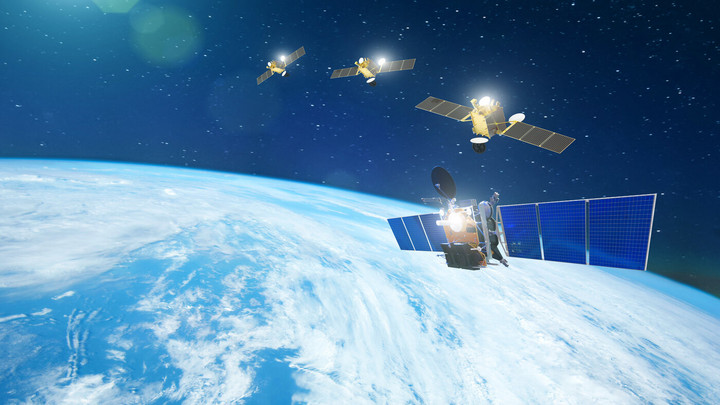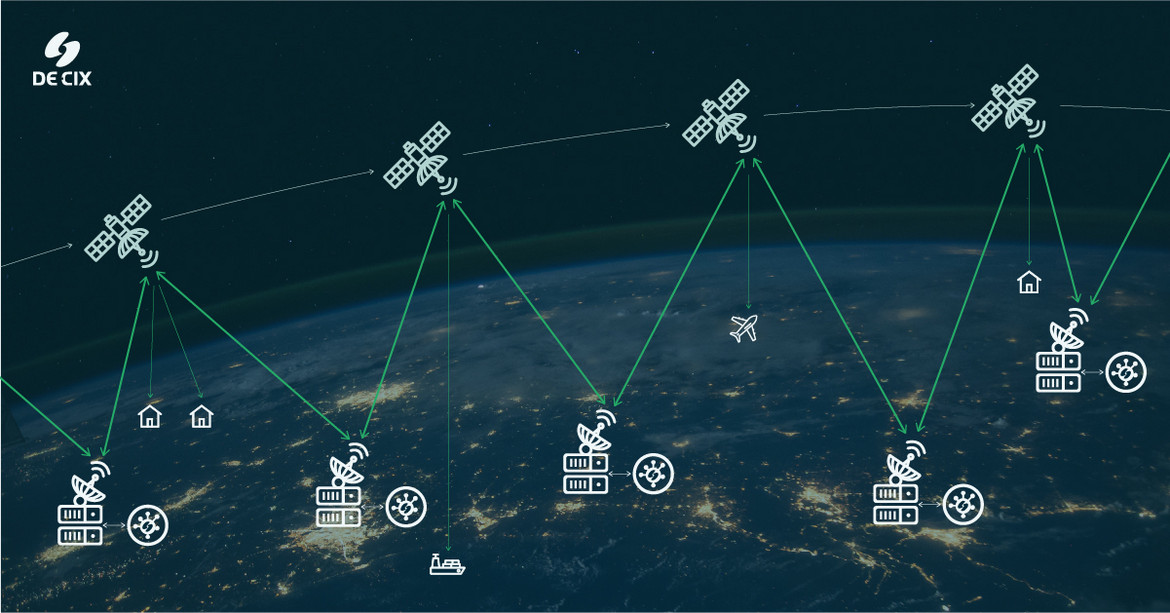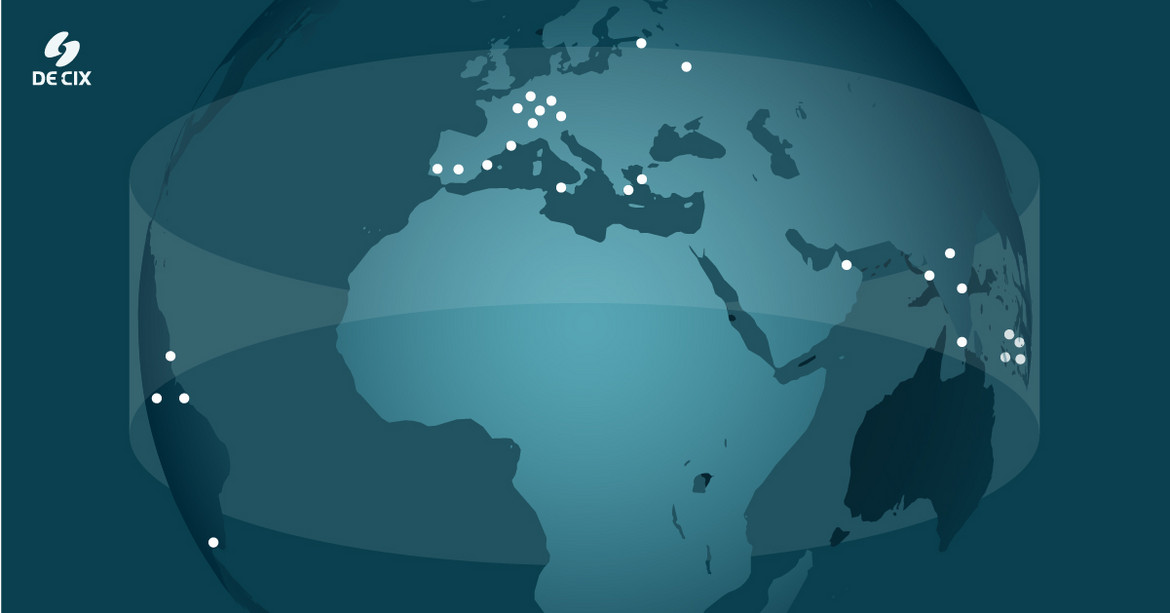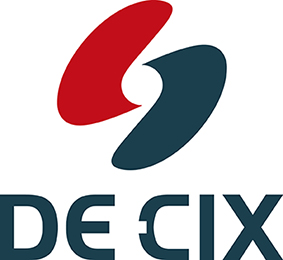New Hope from Space
Ivo Ivanov from DE-CIX, on how satellite infrastructure will support bringing the digital universe of services to the user – wherever necessary.

© aapsky | istockphoto.com
Low-Earth Orbit (LEO) satellites are opening new frontiers in the delivery of the Internet – in the delivery of content, e-commerce services, cloud services, and applications – to regions of the world that have so far missed out on connecting to the digital superhighway. But operating satellites is not enough, explains Ivo Ivanov, CEO of DE-CIX International. To improve connectivity at the edge, satellite network providers need to connect their networks to high performance interconnection infrastructure on the ground, and thus bring access to information through the “network of networks” to underserved remote regions.
Is space the next frontier for the Internet? The growing interest in providing Internet access via LEO satellites may seem out of this world, but in fact, the frontiers which are being pushed back are right here on the planet’s surface. Currently, close to 50% of the world’s population do not have effective (if any) access to the information superhighway. According to McKinsey, Elon Musk’s SpaceX raised more than $1.3 billion in funding in 2019 alone – investments are likely to increase dramatically as the high potential starts being realized. With SpaceX having already received more than half a million orders from end consumers by May 2021, the dynamism of the market is clear.
The new rollout of LEO satellite Internet provision offers the potential to bring remote communities – isolated from the main terrestrial fiber data highways – online to join the global Internet. These communities are struggling to run online businesses and to gain good access to the Internet for schooling and tertiary education – as well as for modern digital services, like video and audio streaming – as a result of their current connectivity solutions. These often involve copper cable networks and at most geostationary satellite connectivity, resulting in Internet speeds down to less than one megabit per second and latency (response time) as high as 400 milliseconds end-to-end.
Satellites in low-earth orbit offer economic advantages over the existing medium-earth orbit and geostationary satellites that have until now been largely responsible for space-based communications and Internet connectivity. LEO satellites are comparatively cheap and easy to build and launch. This provides a competitive advantage not only over other satellite communication systems, but also over fiber and mobile terrestrial network technology when it comes to gaining access to the Internet – and to cloud services and digital applications – from remote locations. This means that a satellite network provider can bring connectivity to remote locations with greater economic feasibility and a better potential business case than most other types of network operator can.
Over the last century or so, connectivity – and in the last couple of decades Internet connectivity and data transport – has evolved along a similar path of development to the evolution of transport as a whole: The original telecommunication networks were built on land, followed by subsea cables that traverse oceans, before taking to the air in the form of consumer mobile networks as well as expanding into space. And yet, for the time being, humanity remains largely land-locked: Taking data into orbit is not designed to have the Internet in space, but to bring it back to Earth where it’s needed, opening up as yet digitally unchartered regions to the potential of the global Internet.
LEO satellite connectivity offers the potential to open markets and geographical regions that have as yet been underserved digitally – and bring access to the wealth of content, applications, services, and knowledge into these areas.
Satellites: the cell towers of the stratosphere
Alongside the economic advantages, LEO satellites also have other things going for them over satellites in higher orbits, exactly because they are closer to the Earth’s surface. This means that the data does not need to be transported as far, reducing the length of time it takes to get to its destination (therefore reducing the latency for users on Earth). At the same time, LEO satellites orbit the planet very fast (at speeds of around 27,000 km/h), meaning that there is the need for a greater number of satellites working together, and requiring regular handovers to ground stations on the Earth’s surface in order to ensure continuous connectivity.
Thinking about how LEO satellites function, they can be understood as analogous to the mobile phone infrastructure on Earth. Here, the LEO satellites take on a role similar to cell towers, and communicate with a ground station on Earth. The satellite consists of receiver/sender technology in the form of small terminals capable of connectivity between any two points in line of sight, with a bandwidth in the gigabit region. Larger devices with a combination of streams can bring the transmission bandwidth up to terabit levels.
The ground station is, in essence, a data center with an uplink terminal on the roof. Given that LEO satellites orbit the planet so quickly, there need to be enough satellites to ensure uninterrupted access, with sufficient time for the ground station to complete the handover to the next satellite before each one travels beyond the horizon. Coming back to the cell tower analogy, the handover is essentially the same mechanism that occurs with a mobile phone traveling between cell towers. The difference in the case of LEO satellites is that it is the cell towers (satellites) that are moving, and the mobile phone (ground station) stays still.
Companies such as SpaceX are currently investigating optimizing satellite-to-satellite communication using lasers, in the form of free space optical communication (FSOC) technology. This is still at an experimental stage, but the concept has the potential to be able to transport data around the planet 25%-30% faster than fiber.
From satellite constellation to space Internet provider
Having thus created a LEO satellite network, otherwise known as a constellation, the LEO network operator has the infrastructure in place to provide connectivity, but the story doesn’t end here. The satellite network operator is not yet a satellite Internet provider. On the one hand, the connection to the remote community needs to be realized – but before there is any sense in doing that, the satellites also need to connect to the Internet.

Figure 1: To offer the best performance to end users, satellite network operators should connect into the geographically nearest hub that supports a sizeable and diverse digital ecosystem. © DE-CIX
No network can single-handedly supply their users with the Internet. They need to connect with other networks. The global Internet is nothing more than an enormous network of sub-networks, and these need to be interconnected to exchange data. Each individual network needs to interconnect with a wide variety of networks to provide its users with reliable access to the global Internet. Therefore the satellite network operator also needs to interconnect with other networks before they can take on the role of a space Internet service provider.
To do this, an absolutely essential mechanism and one of the most common methods is to connect these networks to an Internet Exchange (IX) – ideally in a digital hub with a large ecosystem of networks, cloud providers, and digital infrastructure providers. For this, the satellite Internet provider’s ground station will need to be connected by fiber to a data center that enables the network to connect to the IX either directly there or via high-speed fiber to an IX-enabled data center in the near vicinity.
Ideally, the ground station data aggregation will be linked to and built around existing ecosystems that already have the participants that the satellite network operator will need to connect to. This gives them access to the global Internet and shortens the path that the data needs to travel before reaching the satellites. To be able to choose the best digital hub to connect to for their needs, the satellite network operator should weigh up the advantages of connecting with as large and diverse an ecosystem as possible, and the advantages of keeping the distances that data needs to travel as short as possible. Balancing this equation will provide the best alternative locations for connecting to the Internet.
Already able to capitalize on their comparatively low altitude and the shorter path the data needs to take, LEO satellite network operators can and should further minimize latency as much as possible to give their users the best user experience physics will allow. They should therefore connect into the geographically nearest hub that supports a sizeable and diverse digital ecosystem. Major content and content delivery networks are likely to have the most in-demand content cached in such locations, meaning that this content can be accessed at as low a latency as possible.
Through its “Space-IX” Program, DE-CIX is ready to support the infrastructure needs of the whole range of space network operators, in particular LEO satellite operators, with terrestrial interconnection, providing them with an interconnection solution that enables access to terrestrial content, cloud, and application networks. DE-CIX Internet Exchanges unite all types of networks – including satellite network operators of all kinds – to share data traffic, applications, and content. The LEO satellite operators thus become a further Internet service provider in the already thriving digital ecosystems, alongside terrestrial and mobile networks. DE-CIX already has IXs in 28 locations around the world where networks can meet and is home to the largest neutral interconnection ecosystem on the planet, including carriers and ISPs, content providers, content delivery networks, application providers, and cloud networks (e.g. Microsoft Azure, Amazon Web Services, Google Cloud, Oracle Cloud, etc.), as well as enterprise networks. These IXs provide excellent opportunities for satellite network operators to connect to the networks they need so that their users can access the global Internet at the lowest possible latency.

Fig.2: DE-CIX’s set of Internet Exchanges provides excellent opportunities for satellite network operators to connect to the networks they need so that their users can access the global Internet at the lowest possible latency. © DE-CIX
Companies like SpaceX, Amazon, Facebook, and Google are driving satellite Internet projects. These companies want to sell services to users in more remote locations that they cannot reach terrestrially. Therefore, we will see the first space network operators coming out of this sector, but we will see a growing range of operators from different segments in the future.
This is the same path of evolution that we have already seen with the subsea cables. Facebook, Microsoft, Google started long ago to build their own subsea cables, while content providers like Apple and Netflix began building their own networks six to seven years back; now they all have global networks. Today the banks and other industry stakeholders are themselves also embarking on building their global terrestrial networks. The rollout will take some time, but these companies will also become global network operators, both on the planet and, in coming decades – where the market potential warrants it – in the stratosphere.
From the ground up – working from below to achieve satellite connectivity
So far, we’ve looked at how a satellite constellation connects to the Internet. The same process needs to be undertaken in the remote community – at the edge of the network. A data center – even a small container data center – can act as the ground station, to which the local community is then connected via cable or mobile networks. In developing areas of high population density but with as yet low rates of access to the global networks, the data expressways, the local people and businesses would benefit from being better interconnected with each other, as well as with the outside world. In this situation, the regional government or local community has the option of setting up their own small Internet Exchange for local data exchange, and providing incentives for satellite network providers to install the necessary ground stations in order to connect to this exchange. In this way, they keep local traffic local, while gaining access to the global Internet as well.
Remote communities that do not have the necessary interconnection know-how can get external help to set up their own IX and keep it running. With 25 years of experience in delivering interconnection services and nurturing digital ecosystems in markets around the world, DE-CIX is able to support these communities to grow their own digital ecosystem. Through the DE-CIX as a Service program, the community can be provided with plug & play interconnection infrastructure, and a local IX can quickly and agilely be set up as a fully-managed service. This will create the conditions for the community to build their own digital ecosystem and create their own interconnection story.
In recent years, there has been a lot of discussion regarding the challenges of connecting remote locations, because the investment is too great to manage this either with cable or with cell towers. Programs for satellite Internet are therefore extremely interesting for many national governments for the rollout of their digital infrastructure programs. Many geographical regions – such as parts of the Indian subcontinent, central Africa, Asia, Europe, and the USA – cannot be served properly through traditional terrestrial infrastructure alone. These regions are truly land-locked – far removed from the landing stations for the submarine cables connecting continents, and from the continent-spanning data highways connecting the major digital hubs. There is a vast difference in the level of investment required – and therefore possible business case that can be created around a project – between the high cost and long lead times of building a fiber-optic infrastructure and the ease of setting up a project involving LEO satellites. Given that they are designed for low earth orbit, the satellites themselves – being small (only around 250 kilograms), relatively inexpensive, and mass-producible – can be taken into orbit comparatively inexpensively. For example, SpaceX is currently putting up 60 satellites with every launch.
In most scenarios, it can be assumed that the satellite Internet service provider will be responsible for setting up and running the satellites and the ground stations. However, governments are likely to finance the ground stations or create a proper investment framework to support satellite Internet access. Over time, as the technology and the business case mature, local communities may find it advantageous to provide investment incentives for more than one satellite network ground station to be built – providing their users with greater choice, but also ensuring greater reliability of the connectivity and reducing dependencies on individual networks for their Internet access. In this scenario, it will be even more important to ensure local interconnection through an IX, building better performance and resilience into their Internet access possibilities. Given the investment hurdles for other types of network operator, the space Internet providers will not necessarily come into competition with other network providers – they will just become another part of the already diverse worldwide Internet ecosystem.
With almosthalf of humanity still unable to connect in an acceptable quality to the Internet, LEO satellites provide an exciting opportunity to offer more of the world’s population high-performance connectivity with 21st-century data rates, and allow them to enjoy the economic benefits of digital transformation. The LEO constellations need to connect to the global Internet at a thriving digital hub with a diverse ecosystem of networks. They should choose hubs as close as possible to the regional communities to be connected, balancing the equation of the shortest distance to the largest and most diverse ecosystem. This will improve the resilience and the performance of Internet service provision for their users at the edge on the ground.
Low-Earth Orbit satellites are clearing the way to new frontiers for the Internet. By ascending into the stratosphere, they will enable billions more to get online and more communities to create their own interconnection story – a momentous step in the history of digitalization. Areas off the beaten digital track will be the winners in this development, as it will help them catch up with the Internet speeds and the performance of digital services that people living closer to the digital superhighway have already come to expect.
Ivo A. Ivanov is CEO of DE-CIX International and COO of DE-CIX Group AG, with more than 10 years’ experience in the regulatory, legal, and commercial Internet environment. Ivo joined DE-CIX in January 2007. In recent years, he has been deeply involved in the establishment of DE-CIX sites in Istanbul, Palermo, Madrid, Marseille, New York, Dallas, Dubai (UAE-IX powered by DE-CIX), as well as Mumbai (Mumbai IX powered by DE-CIX), and several DE-CIX consultancy projects in Africa, Asia, and Europe.
Ivo has an educational background focused on law and business. Fluent in German, English, Russian, and Bulgarian, he graduated from a German business school in 1995 and holds two law degrees, from the Universities of Sofia (Bulgaria) and Bonn (Germany). After graduation, he worked as a lawyer, with a focus on e-commerce law, IP law, telecommunications law, and data protection law.
Please note: The opinions expressed in Industry Insights published by dotmagazine are the author’s own and do not reflect the view of the publisher, eco – Association of the Internet Industry.





